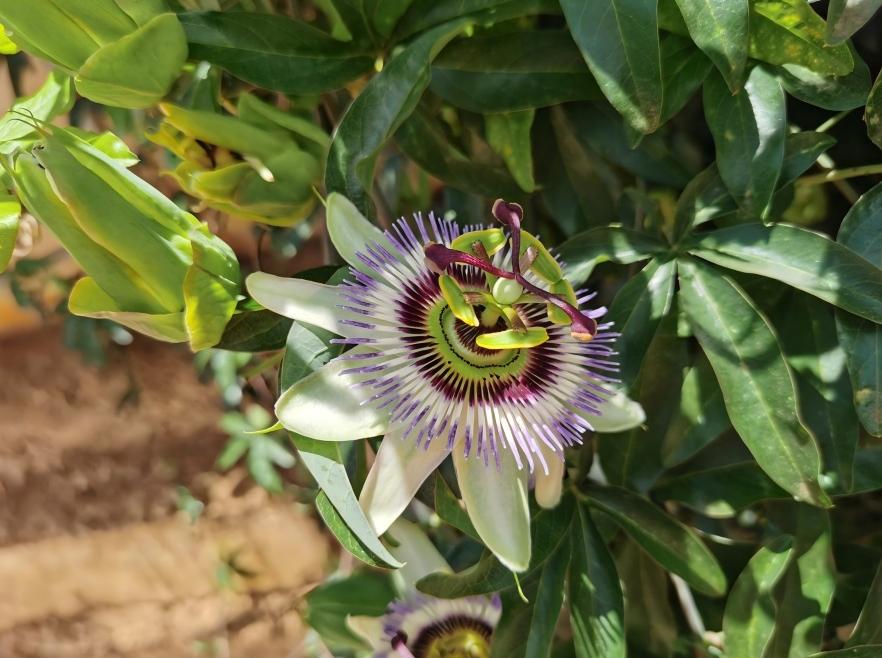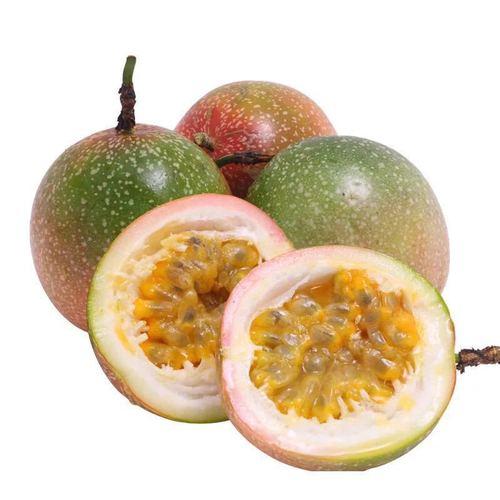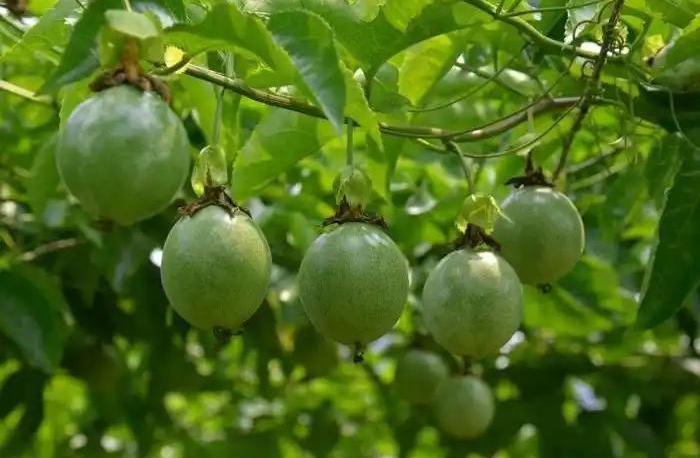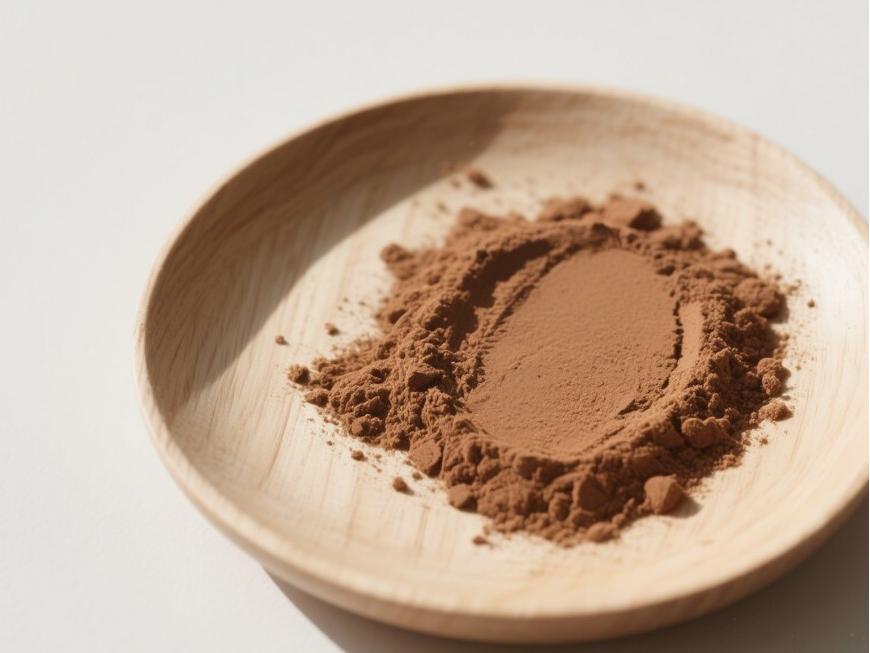Exploring the Potential of Passionflower Extracts in Functional Foods
Passion fruit, hailed as the “King of Juices,” ranks among the world's most aromatic fruits. Over 165 fragrance compounds have been identified in its fruit, encompassing nearly all the aromatic profiles found in tropical and subtropical fruits. Native to South America, it is now widely cultivated across tropical and subtropical regions globally, emerging as a highly sought-after ingredient in premium beverages and health foods.
Beyond its distinctive, rich aroma, passion fruit is a natural treasure trove of nutrients and functional compounds. It is not only rich in essential nutrients like amino acids, vitamins, minerals, and dietary fiber, but also contains bioactive components such as flavonoids, alkaloids, and carotenoids. These exhibit multiple functional properties, including antioxidant effects, offering abundant possibilities for functional food development.
Traditionally, passion fruit processing focused primarily on juice extraction, leaving significant byproducts like peel and seeds underutilized. Green Spring Technology transforms these “waste resources” into high-value ingredients through innovative extraction techniques and whole-fruit utilization processes: peel yields natural pectin and polyphenols, while seeds refine premium oils, enabling comprehensive development of the entire fruit.

As a reliable passionfruit extract supplier, Green Spring Technology's products offer the following core advantages:
· High bioactive content: Utilizing low-temperature extraction processes to maximize the efficacy of active components like flavonoids and alkaloids;
· Whole-fruit utilization for sustainable supply: Comprehensive development of pulp, peel, and seeds ensures high resource utilization and stable supply;
· Traceable quality, standardized production: Implementing end-to-end quality control from cultivation to finished products ensures consistent, safe, and reliable batches;
· Proven application solutions, streamlined product development: Extracts are widely adaptable for solid beverages, dietary supplements, functional foods, and more.
Green Spring Technology is committed to providing standardized, customizable, and traceable passion fruit extract ingredients, empowering enterprises to create next-generation natural, healthy, and innovative food and health products, and jointly exploring new possibilities in the functional food sector.
1 Passion Fruit Extract: A Natural Nutrient Treasure Trove Pioneering a New Era in Functional Foods
Passion fruit not only boasts a unique flavor but is also a treasure trove of nutrients. Its extracts demonstrate significant application value and development potential in the functional food sector.
Rich Amino Acids and Functional Proteins
Passion fruit contains 17 amino acids, including 7 essential amino acids for humans and 2 essential amino acids for children. Its total amino acid content reaches 1.054 g/100g, surpassing common fruits like bananas and mangoes. Studies indicate that certain varieties' juices exceed FAO/WHO recommended ratios for essential amino acids. Additionally, passionfruit contains multiple bioactive protein components, such as the antibacterial Pe-AFP1 and Pa-AFP1, and the antifungal protein Passiflin. These exhibit inhibitory potential against common pathogenic bacteria and cancer cell proliferation, providing natural ingredient support for functional food development.
Minerals and Dietary Fiber
Passion fruit pulp, peel, and seeds are rich in macrominerals like potassium, magnesium, and calcium, as well as trace elements such as iron and zinc, with potassium content being particularly outstanding. The peel, often discarded, is actually abundant in dietary fiber, accounting for up to 73% of dry weight. Its water-holding capacity and swelling properties surpass those of standard bran fiber, contributing to intestinal health and metabolic regulation. Additionally, the peel serves as an excellent pectin source with an extraction rate of up to 14.8%. Passionfruit pectin is a natural low-methoxyl pectin with minimal impurities and excellent gelling properties. Research indicates its potential in preventing ulcerative colitis.

High-Value Oil Components
Passionflower seeds contain 19%–28% oil, with unsaturated fatty acids comprising over 85%—primarily linoleic acid, rivaling safflower oil in content. These unsaturated fatty acids aid in antioxidant activity, lipid regulation, and cardiovascular health maintenance, making them suitable for premium health oils and functional food ingredients.
Passionflower extracts, rich in diverse components with well-defined functions, align with the food industry's demand for natural, healthy, and sustainable ingredients. They hold broad development prospects in dietary supplements, gut health products, and functional foods targeting cardiovascular and cerebrovascular health.
2 Passion Fruit Extract: Multi-functional Ingredients Empowering Health Food Innovation
Passion fruit extract is rich in multiple high-value natural bioactive compounds, enabling its broad application in developing various functional foods, beverages, and dietary supplements. It provides a robust raw material foundation for product innovation.
Polyphenols — Natural Antioxidants and Formulation Enhancers The peel and pulp of passion fruit are rich in polyphenols such as flavonoids and phenolic acids, exhibiting excellent antioxidant properties.
They are suitable for:
· Sports nutrition products, energy bars, and health beverages to help mitigate oxidative stress
· Natural preservation systems, replacing or partially substituting synthetic antioxidants to support clean label formulations
· Synergistic blending with vitamins C and E to enhance product stability and functional coordination
Alkaloids — Functional Food Potential Components Passionflower-specific alkaloids (e.g., harman) serve as:
· Natural ingredients for mood health products in gummies, solid beverages, and effervescent tablets
· Circadian rhythm regulation products like calming snacks and nighttime recovery drinks
Carotenoids — Natural Pigments and Functional Factors Passionflower carotenoids provide natural yellow hues while also serving as:
· Colorants for functional beverages, dairy products, and confectionery, replacing artificial dyes
· Synergistic antioxidants with polyphenols to enhance overall product antioxidant capacity
Aromatic Compounds — Flavor Enhancement and Product Differentiation Passionflower's rich volatile compounds deliver intense natural aromas suitable for:
· Flavor enhancement in health drinks, fermented milk, plant-based products, etc.
· Natural flavoring in meal replacements, nutritional shakes, etc., reducing artificial flavor additives
Dietary Fiber & Pectin — Texture Improvement & Health Enhancement High dietary fiber and pectin content in the peel can be used for:
· Low GI foods, meal replacement products, and weight management foods to increase satiety
· Stabilizing and thickening agents in baked goods, confectionery, and sauces, replacing synthetic additives
· Prebiotic formulations supporting gut health
Passion fruit extracts, with clearly defined components and natural origins, serve diverse premium product applications including mood support, antioxidant benefits, gut health, and clean label solutions. They empower brands to develop differentiated, functional, and high-value-added health food solutions.
3 Embracing the New Era of Passion Fruit Health Benefits: Green Spring Technology Empowers Functional Food Innovation and Ingredient Security
As a specialty fruit rich in concentrated nutrients and functional compounds, passion fruit's health value is increasingly recognized by consumers, driving sustained market growth. However, the industry currently faces challenges including limited varieties, frequent disease outbreaks, and insufficient deep processing, which constrain its broader high-value applications.
Deeply understanding these industry pain points, Green Spring Technology is committed to providing clients with stable, high-quality passion fruit extract ingredients, empowering enterprises to seize new opportunities in the functional food market:
· Premium Ingredients, Stable Supply:
Through scientific breeding and standardized cultivation management, we continuously optimize variety resistance and component content, ensuring stable active substances and strong batch consistency in extracts;
· Whole-fruit utilization, value enhancement:
Leveraging advanced extraction techniques, we efficiently utilize pulp, peel, and seeds to provide multi-specification, multi-component functional ingredients—including pectin, dietary fiber, polyphenols, and oils—supporting clients in developing clean-label, naturally derived products;
· Application support, innovation synergy:
We go beyond supplying ingredients to provide application solutions and technical support, accelerating brands' innovation in emotional wellness, antioxidant benefits, and gut health products.

Green Spring Technology empowers clients to create next-generation health foods with traceable, high-standard, customized passionflower extract solutions, jointly advancing the industry toward a high-value, sustainable future.
Contact us at helen@greenspringbio.com or WhatsApp: +86 13649243917 today for passionflower extract samples and industry-specific application solutions!
Reference
[1]Carvalho DSF,et al.Chemical composition and antioxidant capacity of Brazilian Passiflora seed oils[J].J Food Sci, 2015,80 : C2647-2654 .
[2]Ichimura T,et al.Antihypertensive effect of an extract of Passiflora edulis rind in spontaneously hypertensive rats[J]. Biosci Biotech Bioch,2006,70:718-721 .
[3]Zhou YJ,et al.Update review of Passiflora[J].China J Chin Mater Med,2008,33 : 1789-1793.
[4]Zhao RR , et al.Progress on the research of anxiolytic ingredi- ents and the mechanisms of Passiflora Linn.[J].Food Drug,2011,13 : 354-357 .
[5]Dhawan K,et al.Anti-anxiety studies on extracts of Passiflora incarnata Linneaus[J].J Ethnopharmacol,2001,78 : 165- 170.
[6]He ZC.The emerging tropical advanced beverage fruit to be developed urgently-egg fruit[J].Fujian Sci Technol Trop Crops,1986,12(2) : 11-13.
[7]Wang BM.Nutritional characteristics and cultivation manage- ment measures of passion fruit[J].China Fruit Veg,2020,40(7) : 111-113.
[8]Xing XN,et al.Current status,existing problems and devel- opment suggestions of Guangxi passion fruit industry[J].J South Agr,2020,51 : 1240-1246.
[9]Singh B,et al.Phenolic composition and antioxidant potential of grain legume seeds : a review[J].Food Res Int,2017, 101 : 1-16.
[10]Corrêa RCG,et al.The past decade findings related with nu- tritional composition,bioactive molecules and biotechnologi- cal applications of Passiflora spp.(passion fruit) [J].Trends Food Sci Tech,2016,58 :79-95 .
[11]Yang LM,et al. Research progress on chemical structures and pharmacological activities of natural phloro-glucinols[J].Nat Prod Res Dev,2019,31 : 1656-1667.
-
Prev
Natural Passion Fruit Extract Unlocks New Possibilities in Food and Beverage
-
Next
Optimized Extraction Process: Green Spring Technology's Passion Fruit Extract Empowers Food Innovation


 English
English French
French Spanish
Spanish Russian
Russian Korean
Korean Japanese
Japanese




